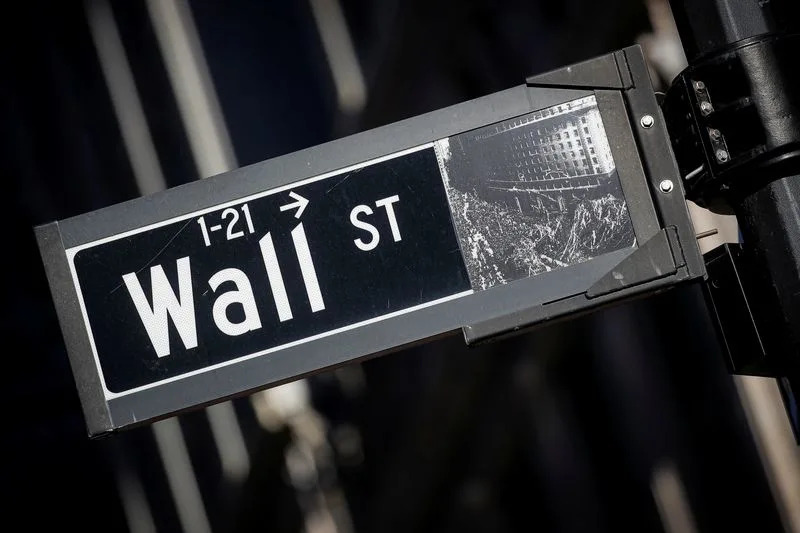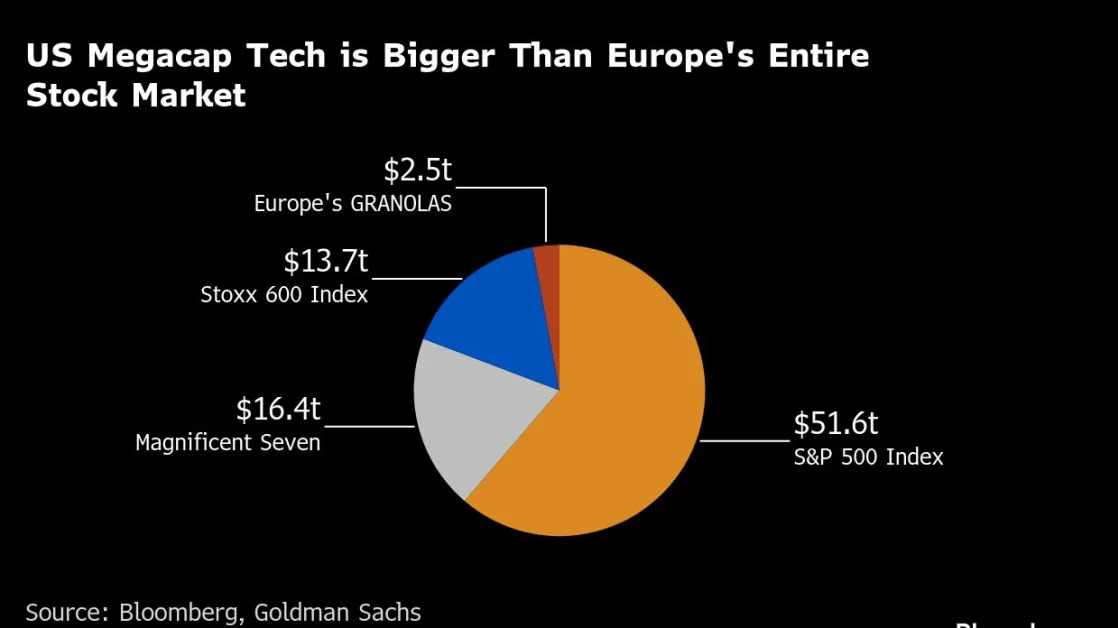
Stocks and shares Isas give you the opportunity to grow your money on the stock market and shelter your gains from capital gains , dividend and income taxes .
However, with so many stocks and shares Isa providers desperate to hold your cash, it can be difficult to choose the best one for you.
Here, Telegraph Money picks some of the best stocks and shares Isas available in 2025, whether you’ve been investing for a while or are an absolute beginner .
In this guide we will cover:
What is a stocks and shares Isa?
Each year you can invest up to £20,000 in a stocks and shares Isa , which is a type of investment account that shelters your money from tax. There will be no dividend tax to pay on income generated by your pot and no capital gains tax when you come to sell your investments either.
The Isa itself is just a wrapper, and you’ll need to choose which investments to hold in your account. The most comprehensive self-select Isas will offer access to thousands of investments including mutual funds, investment trusts as well as shares and exchange-traded funds (ETFs) . However, some providers may only offer a more limited selection of investments.
You can access money in a stocks and shares Isa whenever you wish, although stock market-linked investments are not normally recommended if you are likely to need your money within five years.
Many banks will offer stocks and shares Isas alongside cash Isas , but online investment platforms tend to be cheaper and offer more choice to private investors.
What are the different types of stocks and shares Isa?
There’s a wide choice of stocks and shares Isas on the market, but they can broadly be split into two types:
To confuse matters, many self-select Isas – which offer a huge choice of investments – will offer ready-made portfolios, too.
In addition to stocks and shares Isas, it’s also possible for those aged under 40 to save for a house deposit or later life with a stocks and shares Lifetime Isa . Parents can also open a junior stocks and shares Isa on behalf of their children.
How we picked the best stocks and shares Isa providers
The best stocks and shares Isa provider for you will largely depend on the type of investor you are – for example whether you want to choose your own investments, or favour a ready-made solution – and the amount of money you have to invest. A platform that offers the lowest fees to an investor with a reasonable amount stashed away, may not offer such good value to one that’s just starting out.
To pick our best stocks and shares Isa providers, in the self-select area, we have used cost analysis from consultancy The Lang Cat – compiled on behalf of Telegraph Money – that shows the cost of 12 fund trades a year on a variety of platforms with different sized sums invested. Our table below shows the cheapest and most expensive places to invest from £5,000 to £1m in an Isa. Remember, you will pay fund management fees on top.
For our ready-made picks we used cost examples from Boring Money .
While it’s important to understand how much you will pay for your stocks and shares Isa, you shouldn’t overlook the service and functionality it will deliver. For this reason we have also used wider analysis from Boring Money, covering a broad range of criteria including website and app testing, customer reviews, brand longevity, and customer reviews.
Also note that our cost examples only provide a guideline of costs for a “typical” customer. The actual charges that you pay for your stocks and shares Isa will depend on the type of investments you choose and the frequency that you trade.
This means that when you are choosing a stocks and shares Isa and comparing costs, you need to keep in mind how you will likely invest. Share-trading costs, for example, will be particularly important if you are likely to trade regularly or don’t plan to invest in funds.
Best stocks and shares Isa providers: do it yourself Isas (self-select)
Best Isa for smaller balances (below £50,000): AJ Bell YouInvest
Cost: £31 for £5,000, £81 for £25,000 and £143 for £50,000
Boring Money rating: 4.5/5
AJ Bell is a great all-rounder. Although it isn’t always the cheapest stocks and shares Isa in this category, its pricing is competitive – particularly for accounts in the £15,000 to £25,000 range.
For example, at £25,000, the cost of 12 fund trades a year is £81, compared to £88 with Fidelity, £108 with Interactive Investor (on its Essentials Plan) and £113 with Hargreaves Lansdown.
AJ Bell’s platform charges are also capped. With no platform charges payable on funds over £500,000, this keeps prices down for larger investors. This means the maximum charge for our example investor is £893.
The diverse choice of investments offered by AJ Bell makes it a good choice for experienced investors who want to build their own portfolios. However, its affordable ready-made portfolios and its high-quality content means it shouldn’t necessarily be overlooked by new or aspiring investors.
All AJ Bell customers also get access to Shares Magazine.
Best Isa for larger balances (over £50,000): Interactive Investor
Cost: £144 (flat fee)
Boring Money rating: 4/5
For investors with an Isa worth £50,000, the price difference between AJ Bell and Interactive Investor is almost too close to call (the cost for our assumed investor with AJ Bell is £1 a year cheaper, at £143). However, for bigger portfolios Interactive Investor steals the march on price.
That’s because unlike most of its competitors, Interactive Investor charges a flat fee, meaning the price for our 12 monthly fund trades remains at £144, irrespective of whether a pot is worth £50,000, £100,000 or even £1m.
By comparison, if our 12-trades-a-year investor racks up £1m in their Isa , charges would be £600 a year with Charles Stanley, £893 with AJ Bell or £3,000 with Hargreaves Lansdown.
The costs we have quoted for Interactive Investor are based on its “Investor Plan” which charges a monthly fee of £11.99 and includes one free trade a month (as well as free regular trades). As part of the payment plan, account holders can also open a junior Isa for each of their children.
Interactive Investor offers a huge choice of investments like many of its peers – including funds, ETFs, investment trusts, bonds and UK and international shares.
However, while there is no arguing with the very low costs it offers larger investors, Boring Money noted that the platform could be overwhelming for beginners. It also suggested that its website and app may not feel intuitive to less experienced investors.
Worth a mention: iWeb and Vanguard
Interactive Investor is undeniably a low-cost option for larger investors, but it’s not the cheapest. The fees for our 12 monthly trades, whatever the size of your pot, are just £60 (£5 a trade) with iWeb. However, it’s very much a no-frills option and there’s no app – Boring Money sums it up as “cheap, basic and barren”. Nonetheless, it still gives iWeb four out of five stars and it’s recommended by 81pc of its readers who reviewed the service.
iWeb is owned by Lloyds Banking Group and while it might not be a great choice for a beginner it could be a very cost-effective one for investors who know what they are doing.
It’s also worth mentioning Vanguard, the US investment company which has very much cornered the market for low-cost index-linked investing, since its launch on this side of the Atlantic in 2009. It offers access to over 85 Vanguard funds and ETFs as well as ready-made portfolios.
However, Vanguard is making changes to its charging structure, which will make it less cost-effective for smaller investors. The platform charge is currently 0.15pc but from the end of February it will be introducing a new £4 monthly fee for investors with self-select Isas who have a balance below £32,000, increasing costs by £48 over the course of a year. The fee for managed Isas, however, will drop from 0.3pc to 0.2pc.
Best stocks and shares Isa providers: ready-made services
Best ready-made Isa: Moneyfarm
Cost: £6.20 a year on £1,000 pot, £31 on £5,000, £310 on £50000
Boring Money rating: 4.5/5
If you are after hassle-free investing, Moneyfarm offers access to a variety of ready-made portfolios. You can choose between fixed allocation – the cheapest, passive option, quoted in our costs above – or an active management style if you prefer. There are also thematic or ESG investment portfolios.
Charges are made up of a platform fee, plus a fee for the investment that you choose. The platform fee starts at 0.45pc (on a minimum investment of £500) but decreases for larger pots, dropping to 0.35pc if you have £100,000 to invest, and eventually bottoming out at 0.25pc on £500,000 or more.
Once your confidence grows there is also the option to add mutual funds or shares.
Boring Money praised the platform for how easy it is to use and the ready-made portfolios make it a natural choice for beginners. However, what gives Moneyfarm an edge over many of its peers is that it’s not just execution-only. The service offers regulated advice and customers can book a call to discuss their needs with a “human adviser” if they wish.
On the downside, Boring Money notes that while increasing choice is largely positive, it may be at risk of making Moneyfarm’s proposition a bit more confusing for absolute beginners.
Worth a mention: Moneybox
The two biggest and most established “robo” services, Moneyfarm and Nutmeg, both require a minimum investment of £500. However, there are also stocks and shares Isa providers targeting beginners with smaller sums to invest.
One that’s worth mentioning is Moneybox. Although it is more expensive than many of its rivals (0.45pc plus £1 a month) it provides an easy way in to the stock market.
You can start investing from £1 and Boring Money praised its “super easy” to use app and educational content. Investing can be automated too – if you link your bank account to the app, you can round up your purchases to the nearest pound and have your digital change paid direct into your Isa.
There’s only a limited choice of investments though: three ready-made portfolios (cautious, balanced or adventurous) plus a restricted selection of funds and shares. However, that could be regarded as a positive if you are a beginner who feels overwhelmed by the selection offered by some of the biggest platforms.
And while Moneybox only rates it 3.5 out of five possible stars, it gets the thumbs up from customers with 89pc recommending the service.
FAQs
What’s the average return on a stocks and shares Isa?
The return you get on your stocks and shares Isa will depend on where you decide to invest your contributions and how your chosen investments perform.
However, as a guide to UK investment returns, the FTSE 100 delivered an 11.4pc return in 2024 and over the past decade has enjoyed an average of 7.1pc a year, according to figures from AJ Bell.
How much can you pay into a stocks and shares Isa?
Each year you can pay up to £20,000 into Isas. This can be paid into one or more stocks and shares Isas or spread across other types of Isa, such as cash Isas, Lifetime Isas and Innovative Finance Isas). The Isa allowance has been frozen at £20,000 until 2030.
Can I have a cash Isa and a stocks and shares Isa?
Yes – you can pay into both a cash Isa and a stocks and shares Isa, so long as you don’t pay in more than £20,000 in total each tax year.
Broaden your horizons with award-winning British journalism. Try The Telegraph free for 1 month with unlimited access to our award-winning website, exclusive app, money-saving offers and more.





